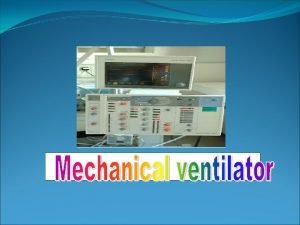PURPOSE DEFINITIONS Noninvasive positive pressure ventilation NIPPV is

- Slides: 1

PURPOSE & DEFINITIONS: • Non-invasive positive pressure ventilation (NIPPV) is a method of supporting ventilation and oxygenation. NIPPV can be used in acute respiratory failure to avoid endotracheal intubation. EPAP (expiratory pressure) = PEEP = CPAP INDICATIONS: • COPD exacerbation (↓intubation, ↓ mortality) • Cardiogenic pulmonary edema (↓ mortality) • Other causes of respiratory failure • DNI status • Extubation to NIPPV contra-indicated? yes Intubation indicated? INTUBATE CONTRA-INDICATIONS: • Unresponsiveness/coma • Inability to trigger breath • Inability to protect airway / remove mask • Risk of emesis / copious secretions • Recent head/neck surgery HELMET FULL FACE ONE Link to the most current version → onepagericu. com @nickmmar ABG k Pulse Ox p. H / PCO 2 / Pa. O 2 / HCO 3 VENTILATION To increase the p. H increase the driving pressure (IPAP – EPAP) PARTIAL FACE Sp. O 2 OXYGENATION To increase Pa. O 2 / Sp. O 2 adjust oxygenation parameters (Fi. O 2 & EPAP) NASAL Scalars correspond to pressure, flow, & volume waveforms no VT RATE 16 Heater circuit May be better tolerated, may Achieving reduce the likelihood of requiring oxygenation intubation, & decrease mortality. & ventilation No risk of pressure ulcers. failure? goals? Patients can tolerate higher pressures using masks than nasal interface. Full face masks are less likely than partial to cause pressure ulcers, & generally have less air-leak. Comfort is variable. Description CPAP Delivers a continuous pressure (CPAP == EPAP == PEEP) throughout the respiratory cycle, holding open collapsible airways and improving oxygenation. Patient triggers all breaths. Improves oxygenation; relatively well tolerated. Useful in obstructive apneas, reduces intubations in CHF exacerbations. Does not assist ventilation (risk of hypoventilation) Sets, an inspiratory (IPAP) & expiratory pressure (EPAP). Every breath is supported with positive pressure. Patient triggers breaths, there is also a backup rate. (Similar to pressure support) Can have volutrauma T - time/pressure/flow, C – flow, L - pressure Improves ventilation & oxygenation. Useful in COPD to avert intubation & reduce mortality. May also reduce mortality in patients with immunosuppression presenting with hypoxemic respiratory failure. Hybrid mode that dynamically adjusts inspiratory pressure (EPAP) to deliver a desired tidal volume. (Analogous to PRVC/VC+ modes) Ensures minimum ventilation (within a desired pressure range). Not proven superior Can have volutrauma With greater patient effort (e. g. gasping) will provide less support. S/T Spontaneous Timed (a. k. a Bi. Lelel, Bi. PAP) AVAPS Adaptive volume assured pressure support (a. k. a. i. VAPs) PIP 22 T - time/pressure/flow, C – volume, L - volume RATE I TIME RISE 15 12 1. 0 0 EPAP IPAP FIO 2 15 Mode Continuous positive airway pressure V 3 8. 5 16 Choose a mode to correct the underlying problem High air-leak / poor patient comfort? 500 LEAK optimize Choose an appropriate interface reassess CC BY-SA 3. 0 v 1. 0 (2021 -01 -02) NON -INVASIVE POSITIVE PRESSURE VENTILATION by Nick Mark MD Pro’s Con’s May be more comfortable for CPAP or low pressure High air-leak. May cause pressure ulcers on nose. Pt can take oral meds easily. 60 37 Ventilator settings / example EPAP, FIO 2 (Not all NIPPV devices can be used with heater & humidifier) Monitor Ventilation +8, 60% Backup RR, IPAP, Ti, Risetime, EPAP, FIO 2 Ventilation Volumes 8 bpm, 16 cm. H 2 O, 1 sec, 0. 15 sec, +8, 60% Backup RR, Goal TV, Pmin, Pmax, Risetime, PEEP, FIO 2 8 bpm, 450 cc, 10, 20, 0. 15 sec, +8, 60% Ventilation pressures & volumes

